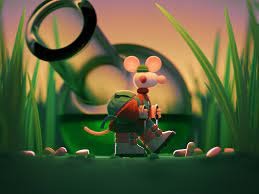Sonia Shah in The New Yorker:
 The experiment that became known as the Elephant Man trial began one spring morning, in 2006, when clinicians at London’s Northwick Park Hospital infused six healthy young men with an experimental drug. Developers hoped to market TGN-1412, a genetically engineered monoclonal antibody, as a treatment for lymphocytic leukemia and rheumatoid arthritis, but they found that in just over an hour, the men grew restless. “They began tearing their shirts off complaining of fever,” one trial participant, who received a placebo, told a London tabloid. “Some screamed out that their heads were going to explode. After that they started fainting, vomiting and writhing around in their beds.” The heads of some of the subjects swelled to elephantine proportions. Within sixteen hours, all six were in the intensive-care unit suffering from multiple organ failure. They had narrowly survived a potentially fatal inflammatory response known as a cytokine storm.
The experiment that became known as the Elephant Man trial began one spring morning, in 2006, when clinicians at London’s Northwick Park Hospital infused six healthy young men with an experimental drug. Developers hoped to market TGN-1412, a genetically engineered monoclonal antibody, as a treatment for lymphocytic leukemia and rheumatoid arthritis, but they found that in just over an hour, the men grew restless. “They began tearing their shirts off complaining of fever,” one trial participant, who received a placebo, told a London tabloid. “Some screamed out that their heads were going to explode. After that they started fainting, vomiting and writhing around in their beds.” The heads of some of the subjects swelled to elephantine proportions. Within sixteen hours, all six were in the intensive-care unit suffering from multiple organ failure. They had narrowly survived a potentially fatal inflammatory response known as a cytokine storm.
The trial grabbed headlines and sent a “shock wave” through the scientific community, as one of the developers of the drug later wrote. A subsequent review found a few sloppy medical records and an underqualified physician associated with the study, but nothing that could explain a central mystery: the drug had already been tested on rodents and monkeys. Lab animals had tolerated doses that—after adjusting for the animals’ weights—were five hundred times greater than the ones that nearly killed the young men. Why did animal experiments fail to warn scientists that TGN-1412 was dangerous?
More here.
